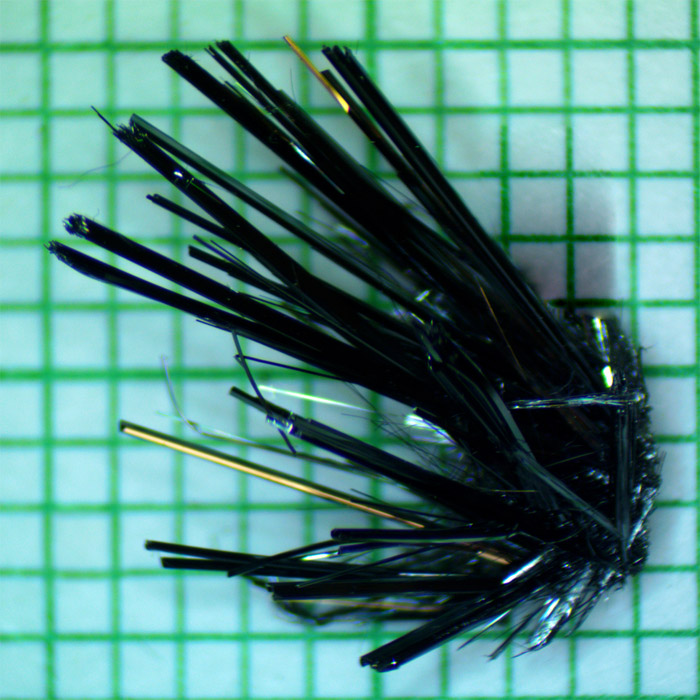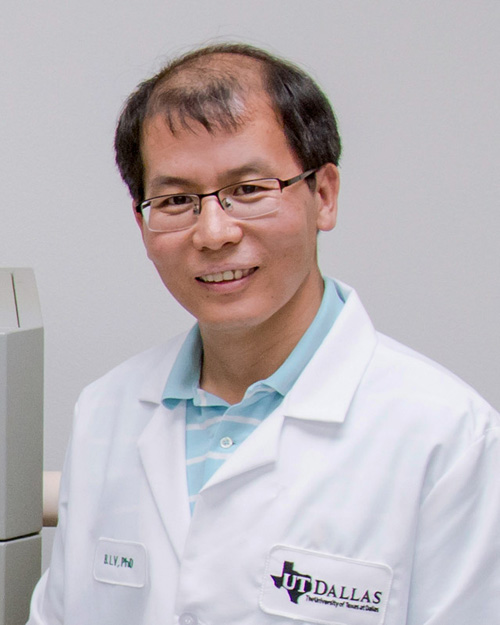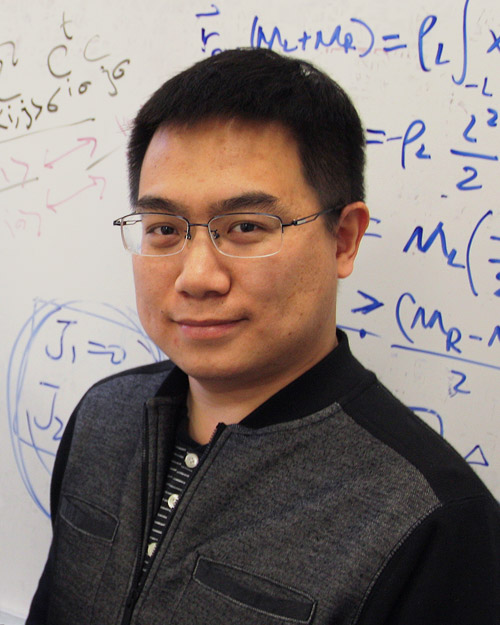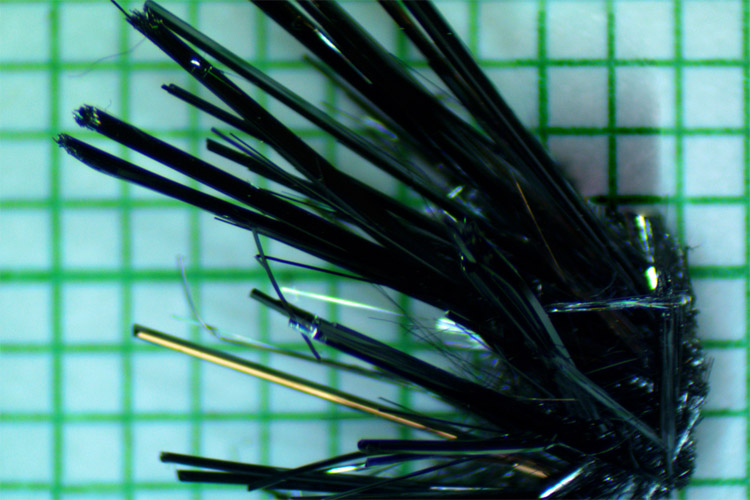
Combining exceptional crystal-growing skills with theoretical predictions, University of Texas at Dallas scientists and their collaborators have revealed new insights into materials called topological insulators.
Topological insulators (TIs) behave like insulators in their interiors but are conductors on their exteriors. There are distinctive families of topological insulators: strong TIs, which are common in nature; weak TIs, which are rare and difficult to produce in the lab; and another rare class called higher-order TIs.
In a cube-shaped, strong topological insulator, for example, all six faces can conduct electrons robustly. In a weak TI, only four sides are conducting, while the top and bottom surfaces remain insulating. In a higher-order TI, electrons move only along selected hinges, where two crystal faces intersect.
The new research, in collaboration with experimentalists at Rice University; the University of California, Berkeley; The Ohio State University; and others, was published Aug. 24 online in Physical Review X. The findings demonstrate clearly for the first time that crystals made from bismuth and iodine in UT Dallas laboratories are not only weak topological insulators, but also undergo a phase transition into a novel structure at room temperature that significantly alters the material’s electronic properties.
“We believe our study has provided the smoking gun evidence to claim this bismuth iodide material is a weak TI,” said Dr. Bing Lv, one of the study’s corresponding authors and an assistant professor of physics in the School of Natural Sciences and Mathematics at UT Dallas. His team produced the large, high-quality bismuth iodide crystals that made the findings possible. “Other researchers have claimed to have produced a weak TI, but their evidence was not as strong.
“We also clearly demonstrate that with only a small temperature drop in the room-temperature range, this material undergoes a topological phase transition from a weak TI to a higher-order TI. This significantly changes the way it conducts electrons.”
Dr. Fan Zhang, associate professor of physics at UT Dallas and a corresponding author of the study, said: “This work is important not only for potential electronic or computing applications at room temperature, but also because it represents the realization of two fundamentally new phases of matter where septillions of electrons organize themselves in two amazing ways.”
‘Clean’ Crystal Surfaces
While scientists have proposed various ways to construct a weak topological insulator, experiments to produce and characterize such crystals have been inconclusive.
Lv (pronounced “love”) and his team produced the bismuth iodide crystals based on Zhang’s previous theoretical prediction about this new family of materials.
One of the major obstacles to definitively producing a weak TI is the need for crystals large enough and of high quality so that they can be cut open, or cleaved, in different ways that reveal “clean” surfaces to examine. According to Zhang’s theory, these surfaces should exhibit specifically different physical properties.
“In order to confirm a weak TI, a testing crystal needs to be cleaved along its vertical and horizontal axes to expose clean surfaces,” Zhang said. “But available TIs typically allow for cleavage along only one axis. Because of this, the experimental confirmation of a weak TI has been elusive.”

“We believe our study has provided the smoking gun evidence to claim this bismuth iodide material is a weak TI. We also clearly demonstrate that with only a small temperature drop … this material undergoes a topological phase transition from a weak TI to a higher-order TI.”
Dr. Bing Lv, assistant professor of physics in the School of Natural Sciences and Mathematics
Over the past few years, Lv and his research team have refined their crystal-growing abilities and are now producing large, high-quality bismuth iodide crystals that can be cleaved along both axes, allowing for more detailed — and conclusive — characterization of the material’s physical properties.
Researchers from Rice University and UC Berkeley used a technique called angle-resolved photoemission spectroscopy to map the electronic band features of different cleavage surfaces, providing critical experimental evidence for Zhang’s theory.
The layered crystals, which are shaped like clear plates or flat needles, present clearly distinguishable lengthwise and widthwise edges, which allowed for optimal cleavage.
“It’s like looking at a book — it’s clear where the flat cover and back surfaces are, and the shorter edges are where you see the pages,” Zhang said.
Changes with Temperature
The researchers found that, depending on external factors such as temperature, a single crystal can exist in different topological phases.
At room temperature — the temperature range at which the crystals are grown — the material is a weak topological insulator, where surface conduction is robust. At lower temperatures, it is a higher-order TI, where electrons conduct essentially along a one-dimensional path along the crystal’s hinges.
“As the temperature falls a few degrees, the layers of atoms in the crystal rearrange slightly, which switches the conduction pattern from its surfaces to the hinges,” Zhang said. “This change might be useful if you want to create a sensor, for example, that operates when the temperature changes. Figuring out how to exploit this superior property will be a task for our engineering colleagues.”

“This work is important not only for potential electronic or computing applications at room temperature, but also because it represents the realization of two fundamentally new phases of matter where septillions of electrons organize themselves in two amazing ways.”
Dr. Fan Zhang, associate professor of physics at UT Dallas
The research was funded in part by a grant from a National Science Foundation program called Designing Materials to Revolutionize and Engineer our Future (DMREF). The program supports activities that significantly accelerate materials discovery and development by building the fundamental knowledge base needed to advance the understanding of materials with desirable properties or functionality.
DMREF is the primary program by which NSF participates in the Materials Genome Initiative, a federal effort to improve U.S. global competitiveness in the advanced materials marketplace.
“Our DMREF team is trying to establish a quasi-one-dimensional material platform for its interesting physics. There are lots of amazing properties for these kinds of materials, and what we are reporting is not all there is,” Lv said. “There will be many more results with these particular materials — the physics is so rich — but we are also already studying additional related materials.”
At the Speed of Bright
UT Dallas has earned a reputation for incredibly bright students, innovative programs, renowned faculty, dedicated staff, engaged alumni and research that matters. Read stories about more of the University’s bright stars.
Other UT Dallas contributors to the study were co-first authors Dr. Sheng Li, a postdoctoral fellow, and Chiho Yoon, a visiting graduate student from Seoul National University; and Xiaoyuan Liu PhD’20, physics doctoral student Nikhil Dhale MS’20, and postdoctoral fellow Dr. Yan-Feng Zhou. In addition to authors at Rice University, UC Berkeley and Ohio State, the team also involved colleagues at University of Houston, SLAC National Accelerator Laboratory, and Lawrence Berkeley National Laboratory.
In addition to the NSF, the research was funded by the Air Force Office of Scientific Research, the Army Research Office, The Welch Foundation, the Gordon and Betty Moore Foundation, and the Sloan Foundation. The Texas Advanced Computing Center at UT Austin also provided resources that contributed to the research results.
